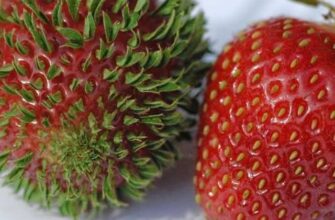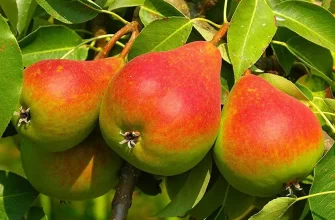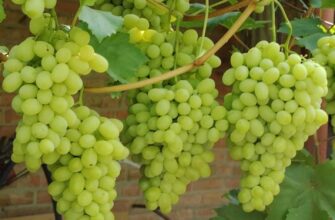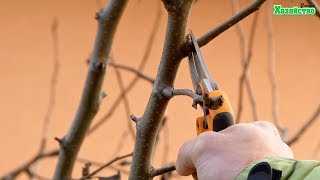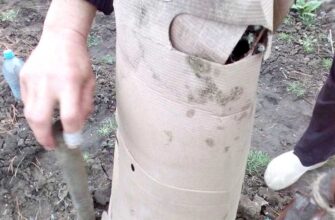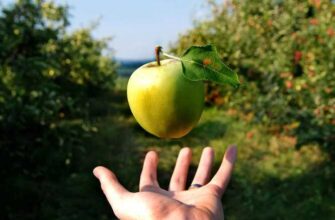- Зачем обрезать красные листья на клубнике?
- Причина 1: Это сигнал проблемы
- Причина 2: Улучшение циркуляции воздуха
- Причина 3: Стимуляция роста
- Предотвращение заболеваний
- Улучшение доступа к свету
- Ускорение созревания плодов
- Улучшение вентиляции
- Повышение урожайности
- Снижение риска заражения вредителями
- Поддержание эстетического вида растения
- Улучшение качества плодов
- Предотвращение переизбытка влаги
- Защита от погодных условий
- Улучшение воздушного обмена
- Важность обрезки
- Предотвращение распространения болезней
- Вопрос-ответ:
- Зачем нужно обрезать красные листья на клубнике?
- Какие причины могут вызывать появление красных листьев на клубнике?
- Можно ли не обрезать красные листья на клубнике?
- Как правильно обрезать красные листья на клубнике?
- Видео:
- Клубника первогодка — надо ли СРЕЗАТЬ ВСЕ ЛИСТЬЯ после плодоношения?
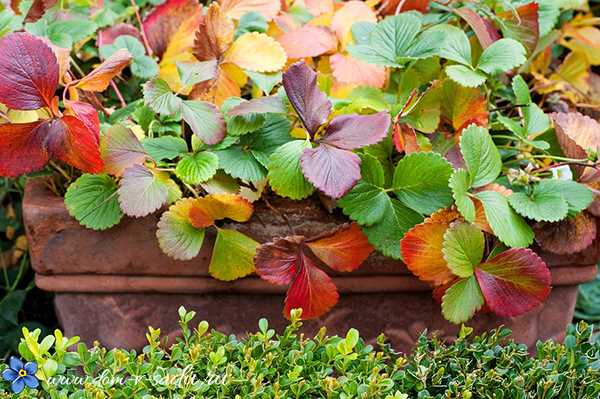
Красные листья на клубнике – это признак возникновения стресса у растения. Почему обрезают эти листья и насколько это важно? Ответ на этот вопрос связан с здоровьем и урожайностью клубники.
Обрезка красных листьев на клубнике является важной процедурой для поддержания растения в хорошем состоянии. Красные листья могут быть признаком различных проблем, таких как болезни, неправильный уход или несоответствие условиям выращивания. Обрезка позволяет удалить больные или поврежденные листья, которые могут стать источником инфекции для других частей растения. Кроме того, обрезка стимулирует рост новых и здоровых листьев, что положительно сказывается на урожайности растения.
Обрезка красных листьев на клубнике следует проводить внимательно, чтобы не нанести повреждений здоровым частям растения. Используйте острый и чистый садовый нож или ножницы для обрезки. Обрезайте листья над уровнем земли, оставляя небольшой пеньок.
Обрезка красных листьев на клубнике – это важный аспект правильного ухода за растением. Эта процедура помогает поддерживать здоровье и урожайность клубники, а также предотвращает распространение болезней. Правильная обрезка поможет растению быстро восстановиться и продолжить свой рост и развитие.
Зачем обрезать красные листья на клубнике?
Обрезка красных листьев на клубнике – это важная процедура, которая помогает улучшить здоровье и рост растения. Почему так важно обрезать эти листья? На самом деле, есть несколько причин.
Причина 1: Это сигнал проблемы
Красные листья на клубнике могут быть признаком различных проблем, таких как недостаток питательных веществ, заболевания или стресс. Обрезка этих листьев поможет удалить поврежденные участки и предотвратить распространение проблемы на остальные части растения.
Причина 2: Улучшение циркуляции воздуха

Красные листья могут создавать загущение и преграды для циркуляции воздуха внутри куста клубники. Это может привести к развитию грибковых заболеваний или гнили. Обрезка красных листьев поможет улучшить циркуляцию воздуха и предотвратить развитие проблем.
Причина 3: Стимуляция роста
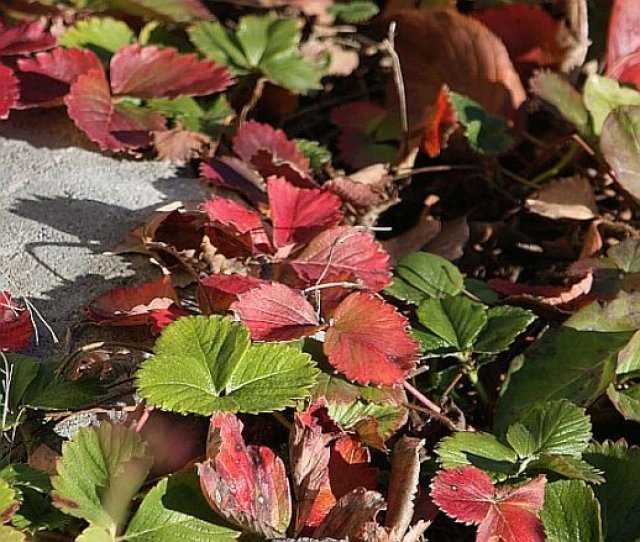
Обрезка красных листьев на клубнике может стимулировать рост новых, здоровых листьев. При удалении поврежденных и больных листьев, растение может сконцентрировать свои ресурсы на развитии новых побегов и плодоношении. Это поможет увеличить урожай и качество ягод.
Таким образом, обрезка красных листьев на клубнике точно необходима для поддержания здоровья растения, предотвращения распространения болезней и стимуляции роста. Не забывайте проводить эту процедуру регулярно, чтобы ваша клубника радовала вас вкусными и красивыми ягодами!
Предотвращение заболеваний
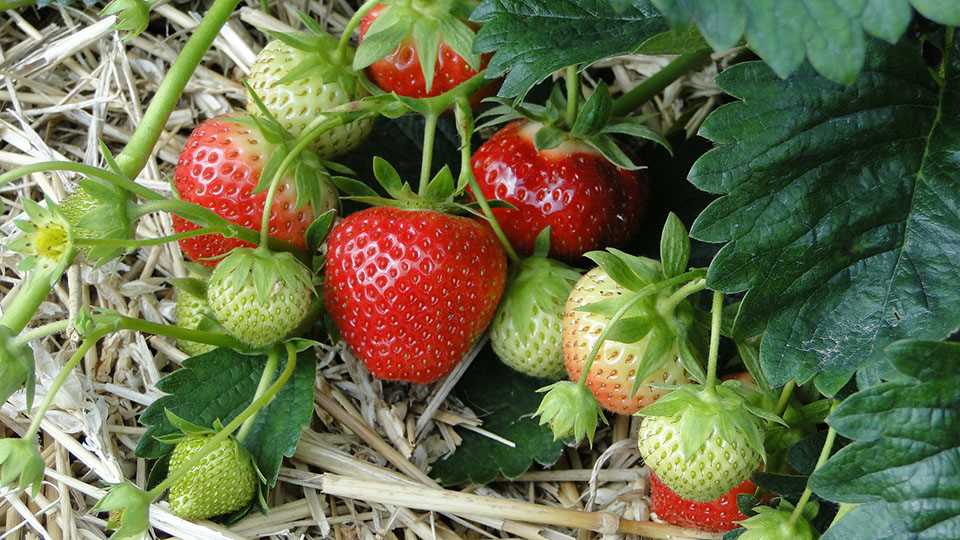
Почему точно обрезают красные листья на клубнике и насколько это важно? Это связано с предотвращением заболеваний, которые могут нанести значительный ущерб урожаю. Красные листья на клубнике часто являются признаком наличия различных болезней или вредителей, поэтому их удаление играет важную роль в поддержании здоровья растений.
Обрезка красных листьев на клубнике помогает предотвратить распространение инфекции, так как многие заболевания могут передаваться через зараженные листья. Удаление пораженных листьев также уменьшает вероятность повторного заражения растений, так как болезнь может распространяться через споры или насекомых.
Кроме того, обрезка красных листьев на клубнике позволяет улучшить доступ кислорода и солнечного света к здоровым частям растения. Это создает неблагоприятные условия для развития болезней, так как многие патогены предпочитают влажные и темные среды. Поддержание хороших условий для роста и развития клубники повышает ее устойчивость к заболеваниям.
Важно отметить, что не все красные листья на клубнике являются признаком заболевания. Некоторые сорта клубники могут иметь красные листья в естественном состоянии или из-за неблагоприятных условий выращивания. Поэтому перед обрезкой следует убедиться, что красные листья действительно вызваны болезнью или вредителем.
В заключение, обрезка красных листьев на клубнике играет важную роль в предотвращении заболеваний и поддержании здоровья растений. Это помогает уменьшить риск распространения инфекции, улучшает доступ кислорода и света к здоровым частям растения, а также повышает его устойчивость к болезням. Однако перед обрезкой необходимо убедиться, что красные листья действительно являются признаком заболевания.
Улучшение доступа к свету
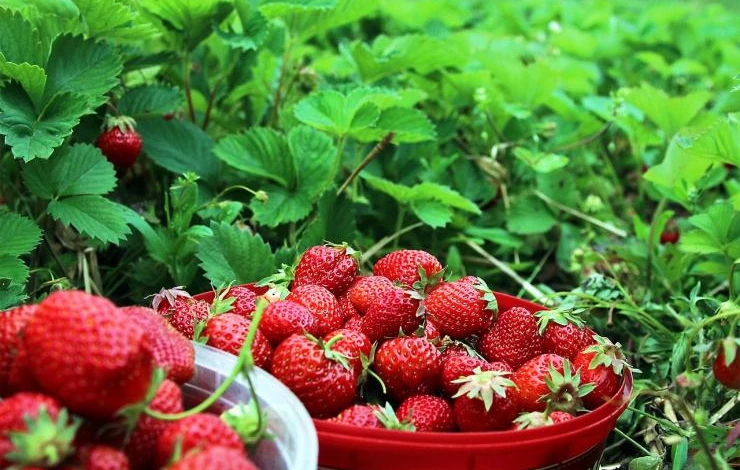
Обрезка красных листьев на клубнике — это важная процедура для улучшения доступа растения к свету.
Красные листья на клубнике могут быть признаком того, что растение получает недостаточное количество света. Почему это важно? Клубника, как и другие растения, нуждается в достаточном освещении для процесса фотосинтеза, который обеспечивает ей энергию для роста и развития.
Обрезка красных листьев позволяет убрать преграду, которая мешает попаданию солнечных лучей на остальные зеленые листья. Это помогает повысить интенсивность фотосинтеза и улучшить общее состояние растения.
Точно определить, ли световой режим является причиной появления красных листьев на клубнике, можно проведя наблюдения и анализируя условия ее выращивания. Если растение находится в тени или получает недостаточное количество света, то обрезка красных листьев будет полезной и необходимой процедурой.
Важно помнить, что обрезка красных листьев на клубнике — это лишь один из способов улучшения доступа к свету. Для достижения наилучших результатов рекомендуется также обеспечить растению пространство для роста и регулярно проводить подкормки, чтобы обеспечить его оптимальными условиями для развития и плодоношения.
Ускорение созревания плодов
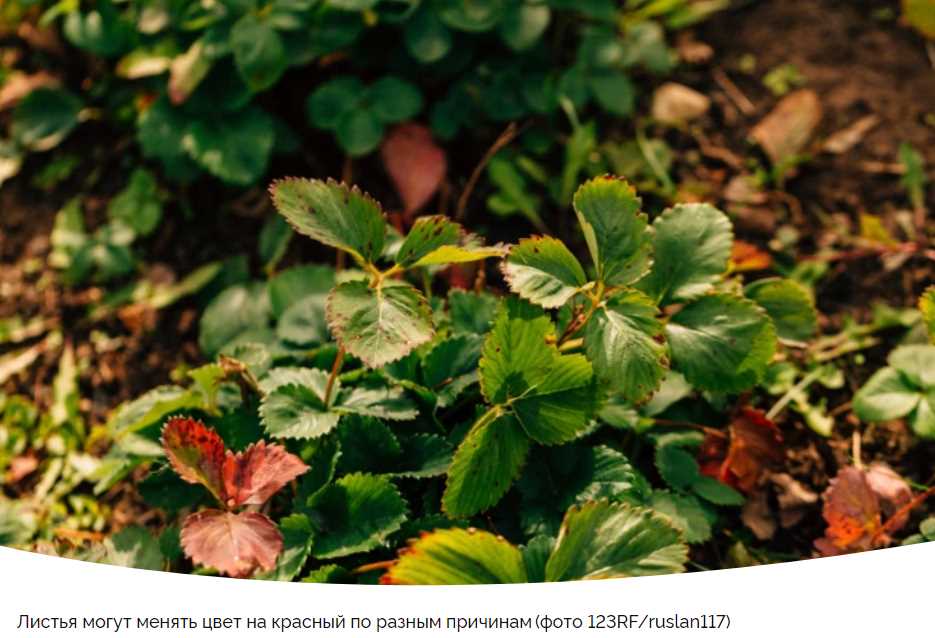
Обрезка красных листьев на клубнике – это один из важных аспектов ухода за растением. Но насколько это точно и почему так важно?
Листья являются одним из основных органов фотосинтеза у растений. Красные листья на клубнике являются симптомом заболевания или стресса растения. Они могут свидетельствовать о недостатке питательных веществ, вредителях или неправильных условиях окружающей среды.
Поэтому обрезка красных листьев является важной процедурой, которая помогает ускорить созревание плодов. Когда растение переносит стресс, оно направляет свои ресурсы на более важные процессы, такие как формирование плодов. Обрезка красных листьев позволяет растению сосредоточиться на развитии и созревании плодов, ускоряя этот процесс.
Однако, перед тем как обрезать красные листья на клубнике, важно точно определить причину их появления. Если листья стали красными из-за недостатка питательных веществ, то необходимо произвести удобрение. Если причина вредители или болезни, то обрезка листьев поможет убрать пораженные участки и предотвратить распространение проблемы.
Важно помнить, что обрезка красных листьев на клубнике является лишь одной из мер по уходу за растением. Важно также обеспечить растению правильное питание, полив, защиту от вредителей и болезней. Все эти факторы вместе помогут ускорить созревание плодов и получить более качественный урожай.
Улучшение вентиляции
Обрезка красных листьев на клубнике — это необходимая процедура, которую садоводы часто проводят. Но почему на листьях нужно обрезают только красные листья?
Один из основных ответов на этот вопрос — улучшение вентиляции. Красные листья, как правило, являются признаком возникновения болезней или вредителей. Если не удалить эти листья, то можно допустить развитие и распространение заболеваний по всему растению.
Обрезка красных листьев на клубнике позволяет создать более просторное и пропускающее воздух окружение для растения. Вентиляция вокруг клубники необходима для предотвращения подсушивания или загнивания листьев, а также для снижения риска развития грибковых инфекций.
Итак, обрезка красных листьев на клубнике — это важная процедура, которая помогает улучшить вентиляцию растения и предотвратить развитие болезней и вредителей. Если вы заметили красные листья на своей клубнике, необходимо точно обрезать их, чтобы сохранить здоровье и урожайность растения.
Повышение урожайности
Обрезка красных листьев на клубнике – это одна из важных процедур для повышения урожайности.
Почему обрезают красные листья?
Обрезка красных листьев на клубнике – это точно то, что нужно сделать, чтобы обеспечить здоровый рост и развитие растения. Красные листья могут быть признаком различных проблем, таких как болезни или недостаток питательных веществ. Поэтому их удаление помогает предотвратить распространение болезней и обеспечить оптимальные условия для роста клубничных кустов.
Как это влияет на урожайность?
Удаление красных листьев на клубнике способствует улучшению показателей урожайности. Красные листья, как правило, являются признаком проблем, которые могут негативно сказаться на росте и развитии растения. При удалении этих листьев, растение получает больше энергии и питательных веществ, которые могут быть направлены на образование плодов. Таким образом, обрезка красных листьев способствует увеличению урожайности и улучшению качества плодов клубники.
Так стоп!!! Вы всё ещё не подписаны на наши каналы в Телеграмм и Дзен? Посмотрите: ТГ - (https://t.me/ru1ogorod) и Дзен (https://dzen.ru/1ogorodru)
Дополнительные меры по уходу за клубникой
Обрезка красных листьев на клубнике – это не единственная процедура, которая может помочь повысить урожайность. Для достижения максимальных результатов рекомендуется также проводить регулярный полив и подкармливание растений, удалять сорняки и отмершие части растений, а также защищать клубнику от вредителей и болезней.
Снижение риска заражения вредителями
Почему обрезают красные листья на клубнике? Это необходимая процедура, которая способствует снижению риска заражения вредителями и сохранению здоровья растения.
Красные листья на клубнике могут быть признаком различных заболеваний и вредителей. Их обрезание позволяет удалить пораженные участки и предотвратить дальнейшее распространение болезни.
Точное определение причины появления красных листьев требует диагностики, но общим правилом является удаление всех пораженных частей растения. Это помогает предотвратить распространение болезней на здоровые участки клубники.
Обрезание красных листьев на клубнике является важной частью профилактики и ухода за растением. Регулярное удаление пораженных участков помогает сохранить здоровье и продуктивность клубники, а также снижает риск заражения вредителями.
Поддержание эстетического вида растения
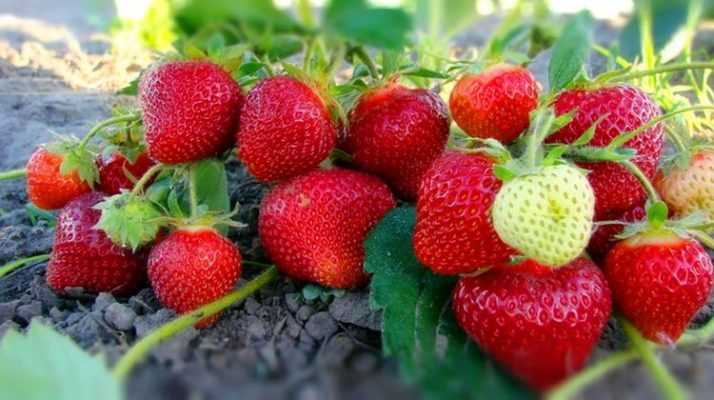
Обрезка красных листьев на клубнике — это важная процедура для поддержания эстетического вида растения.
Красные листья на клубнике могут появляться по разным причинам. Они могут быть результатом недостатка питательных веществ, заболевания или механических повреждений.
Почему же обрезают красные листья на клубнике? Это делается для того, чтобы растение выглядело более здоровым и привлекательным. Красные листья могут испортить внешний вид клубники и создать впечатление, что растение не в хорошей форме.
Обрезка красных листьев также позволяет растению сосредоточить свои ресурсы на развитии здоровых листьев и плодов. Удаление заболевших или поврежденных листьев помогает предотвратить распространение инфекций и повышает шансы на урожай.
Улучшение качества плодов
Почему на клубнике обрезают красные листья и насколько это важно? Обрезка красных листьев на клубнике является важной процедурой, которая способствует улучшению качества плодов.
Красные листья на клубнике могут указывать на различные проблемы, такие как недостаток питательных веществ, заболевания или вредителей. Обрезка этих листьев позволяет устранить эти проблемы и предотвратить их распространение на остальные части растения.
Обрезка красных листьев также способствует улучшению качества плодов. Когда растение тратит энергию на поддержание больного или поврежденного листа, оно отвлекает ресурсы от развития плодов. Путем удаления красных листьев, растение может сосредоточиться на развитии более здоровых и крупных плодов.
Кроме того, обрезка красных листьев помогает поддерживать хорошую циркуляцию воздуха и увлажнения почвы. Это особенно важно для клубники, которая часто страдает от грибковых инфекций, таких как серая гниль, которые могут развиваться во влажных и плохо проветриваемых условиях.
Предотвращение переизбытка влаги
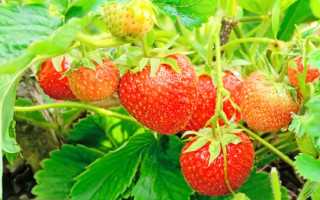
Красные листья на клубнике — это сигнал о проблеме, которую можно решить обрезанием. Почему именно обрезают эти листья и насколько это важно?
Когда листья клубники становятся красными, это может быть признаком переизбытка влаги. Лишние осадки или чрезмерное поливание могут привести к задержке воды в почве, что негативно сказывается на росте и здоровье растения.
Обрезка красных листьев на клубнике точно помогает предотвратить переизбыток влаги. Удаление этих листьев позволяет растению избавиться от излишней влаги и восстановить нормальный баланс в почве. Это важно для сохранения здоровья клубники и ее продуктивности.
Обрезка красных листьев на клубнике — это не только мера предосторожности, но и способ улучшить качество урожая. Удалив проблемные листья, вы позволяете растению сосредоточить свои ресурсы на развитии здоровых и сильных побегов, что положительно сказывается на формировании ягод.
Защита от погодных условий

Почему обрезают красные листья на клубнике? Точно ли это необходимо? Ответ на эти вопросы связан с защитой растения от погодных условий.
Красные листья на клубнике являются признаком перехода растения в состояние покоя. Однако, эти листья также подвержены воздействию холода, морозов и других неблагоприятных погодных условий. Обрезка красных листьев помогает защитить клубнику от негативных последствий таких факторов.
Обрезка красных листьев также способствует лучшему проникновению света и воздуха в растение. Красные листья могут затенять нижние части клубники, что приводит к ухудшению циркуляции воздуха и освещенности. Путем удаления красных листьев можно улучшить условия для роста и развития клубники.
Более того, обрезка красных листьев на клубнике может предотвратить распространение заболеваний и вредителей. Красные листья, подверженные воздействию погодных факторов, могут стать уязвимыми для различных инфекций и насекомых. Удаление таких листьев помогает предотвратить распространение возбудителей болезней и защитить клубнику от вредителей.
Улучшение воздушного обмена
Почему обрезают красные листья на клубнике? На самом деле, это не лишь эстетическая процедура, но и важный агротехнический прием. Красные листья на клубнике могут быть признаком различных заболеваний или неполадок в растении.
Точно определить, почему листья стали красными, можно только проведя анализ и обследование растения. Однако часто обрезка красных листьев становится необходимой мерой, чтобы предотвратить распространение заболевания на остальные части растения.
Важность обрезки
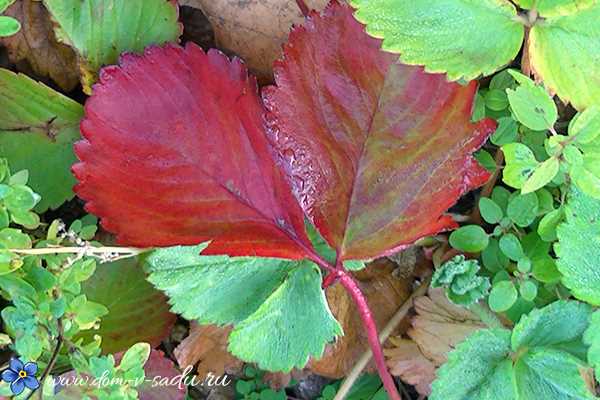
Обрезка красных листьев на клубнике имеет несколько важных причин:
- Улучшение воздушного обмена. Красные листья часто мешают нормальному циркулированию воздуха в растении. При их удалении, растение получает больше кислорода, что положительно сказывается на его здоровье.
- Профилактика заболеваний. Красные листья могут быть признаком возникновения или развития определенных грибковых или бактериальных инфекций. Обрезка позволяет остановить распространение заболевания и спасти растение.
- Стимуляция роста. Удаление красных листьев может стимулировать рост новых и здоровых листьев. Это особенно важно для клубники, так как благодаря этому растение может продолжать расти и развиваться.
Таким образом, обрезка красных листьев на клубнике — это не просто косметическая процедура, но и важное сельскохозяйственное действие, позволяющее улучшить воздушный обмен, предотвратить заболевания и стимулировать рост растения.
Предотвращение распространения болезней
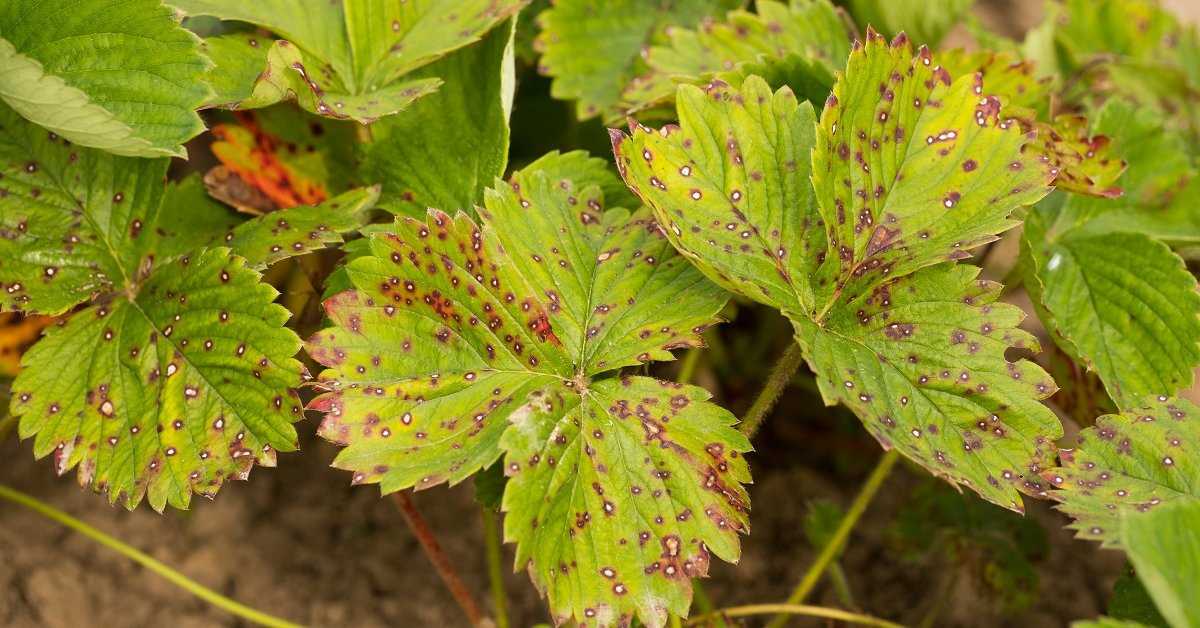
Красные листья на клубнике — признак наличия болезней или вредителей. Чтобы предотвратить распространение этих проблем, садоводы обрезают пораженные листья.
Обрезка красных листьев на клубнике важна, потому что таким образом удаляются источники инфекции. Болезни могут передаваться через контакт с пораженными листьями, что приводит к заболеванию всего растения. Поэтому обрезка позволяет предотвратить дальнейшее распространение болезней.
Кроме того, обрезка красных листьев на клубнике помогает сохранить эстетический вид растения. Пораженные листья выглядят неприглядно и могут испортить внешний вид клубники. Поэтому регулярная обрезка позволяет поддерживать красоту растения и создавать благоприятные условия для его роста и развития.
Таким образом, обрезка красных листьев на клубнике необходима для предотвращения распространения болезней и сохранения эстетического вида растения. Регулярная обрезка позволяет избежать проблем, связанных с заболеваниями и повысить урожайность клубники.
Вопрос-ответ:
Зачем нужно обрезать красные листья на клубнике?
Обрезка красных листьев на клубнике необходима для поддержания здоровья растения. Красные листья могут быть признаком заболевания или стресса клубники. Удаление их помогает предотвратить распространение инфекции и сохранить здоровье растения.
Какие причины могут вызывать появление красных листьев на клубнике?
Появление красных листьев на клубнике может быть вызвано несколькими причинами. Это могут быть заболевания, такие как антракноз или бактериальная пятнистость, недостаток питательных веществ, неправильный полив или слишком сильное воздействие солнечных лучей. Если у вас появились красные листья на клубнике, рекомендуется обратиться к специалисту или удалить их самостоятельно, чтобы предотвратить распространение проблемы.
Можно ли не обрезать красные листья на клубнике?
Если на клубнике появились красные листья, рекомендуется их обрезать. Красные листья могут быть признаком заболевания или стресса растения, и их удаление помогает предотвратить распространение проблемы на остальные части растения. Необрезанные красные листья могут стать источником инфекции и негативно повлиять на здоровье клубники.
Как правильно обрезать красные листья на клубнике?
Для обрезки красных листьев на клубнике следует использовать острые и чистые секаторы. Осторожно отрежьте лист от стебля, придерживая его у основания. После обрезки рекомендуется уничтожить отрезанные листья, чтобы предотвратить распространение заболевания, если оно имело место быть. После обрезки также рекомендуется обработать инструменты дезинфицирующим средством, чтобы избежать передачи инфекции на другие растения.

